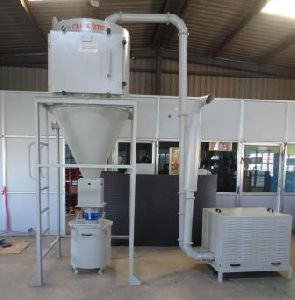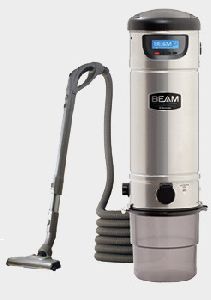
Centralized Vacuum cleaner
250,000 - 800,000 Per piece
1 Set (MOQ)

central vacuum cleaner
Get Price Quote
Factors to consider Type of material Quantity of material Weight of material Characteristics of material (i.e. sticky, wet, dry, etc.) Particle size Length of piping system Diameter of hoses Length of hoses and type of accessories Characteristics of atmosphere (i.e. Explosive, outdoors, indoors etc.) Number of operators How it works Three Phase Centralized vacuum cleaners have the blower and filtration unit located in a central location, and is connected by pipes to fixed vacuum inlets installed throughout the premises. Only the hose and cleaning accessories need be carried to different locations for cleaning. UPVC or metal piping connects the inlets to the central unit. The dirtbag or collection bin in a central vacuum system is usually large enough that emptying or changing need not be done very often. The central unit usually stays on standby and is turned on automatically only when required. A centralized vacuum system typically produces greater suction than common portable vacuum cleaners because a larger blower and more powerful motor can be used when it is not a portable system. A cyclonic separation system does not lose suction as the collection container fills up until the container is almost full. Three Phase Centralized vacuum cleaners offer higher cleaning because unlike a standard vacuum cleaner, which must blow some of the dirt collected back into the room being cleaned (no matter how efficient its filtration), a central vacuum system removes all the dirt collected to the central unit. Since this central unit is usually located outside the main area, no dust is re-circulated back into the room being cleaned. Another benefit of a centralized vacuum system is because the blower unit is located in a remote location, there is much less noise in the room being cleaned than with a standard vacuum cleaner. Components Central vacuum systems are made up of seven major components: the vacuum producer, filtration system, container, discharge device, conveying/piping system, hose and other accessories and the control system. All the components must be designed to work specifically for your application. No two systems will be the same, so each must be engineered for your specific requirements. The Vacuum Producer - For most centralized vacuum systems, we use roots blowers. For certain applications, ring blowers or centrifugal blowers may be used. The Filtration System - Filtration systems may use bag filters or cartridge filters depending on the application. Depending on the quantity and type of dust, we usually provide a pulsejet online self-cleaning mechanism. Storage - If the material is to be continuously discharged back to the process, no internal storage is required. If the material is to be stored within the system, and batch discharged, a certain storage capacity is required. The Discharge Device - The discharge device predominantly used in our central vacuum systems are rotary airlock valves. The Piping Network - The piping must be designed optimally to ensure that the dust/material is conveyed to the filter without any hindrance. The Hose and Tools - Hose and tools must be lightweight, yet be of a robust, industrial duty design as required for the application. Selection is based on ergonomic design and the ability to stand up to abuse.
Best Deals from Central Vacuum Cleaners

central vacuum cleaner
Get Price Quote
1 Piece (MOQ)
We are counted as the trustworthy manufacturer and supplier of Centralized Vacuum Cleaners that are applicable in any manufacturing industry. A Centralized Vacuum Cleaning system uses air as a medium and through a network of pipes removes dust from different locations across a specific area. If cleaning is required at a particular location, the flap of the flange is raised/opened and the hose adapter is inserted. You now have a flexible hose with which to clean the desired area. Once, cleaning is completed, the hose is removed and taken to the next inlet to continue with the cleaning. Features: Time saving equipment Efficient cleaning mechanism Reliable operation High load bearing capacity Ease of operation Less noisy Applications: Automobile industry Textile units Vinyl flooring industry Pharmaceutical Industry Chemical plants

central vacuum cleaner
Get Price Quote

central vacuum cleaners
Get Price Quote
Central vacuum cleaning systems are designed to support multiple operators who require vacuum cleaning or vacuum pickup on demand. These systems maintain vacuum while the airflow changes, depending on the number of users operating it. To the operator, this means performance doesn’t change as the number of operators change.